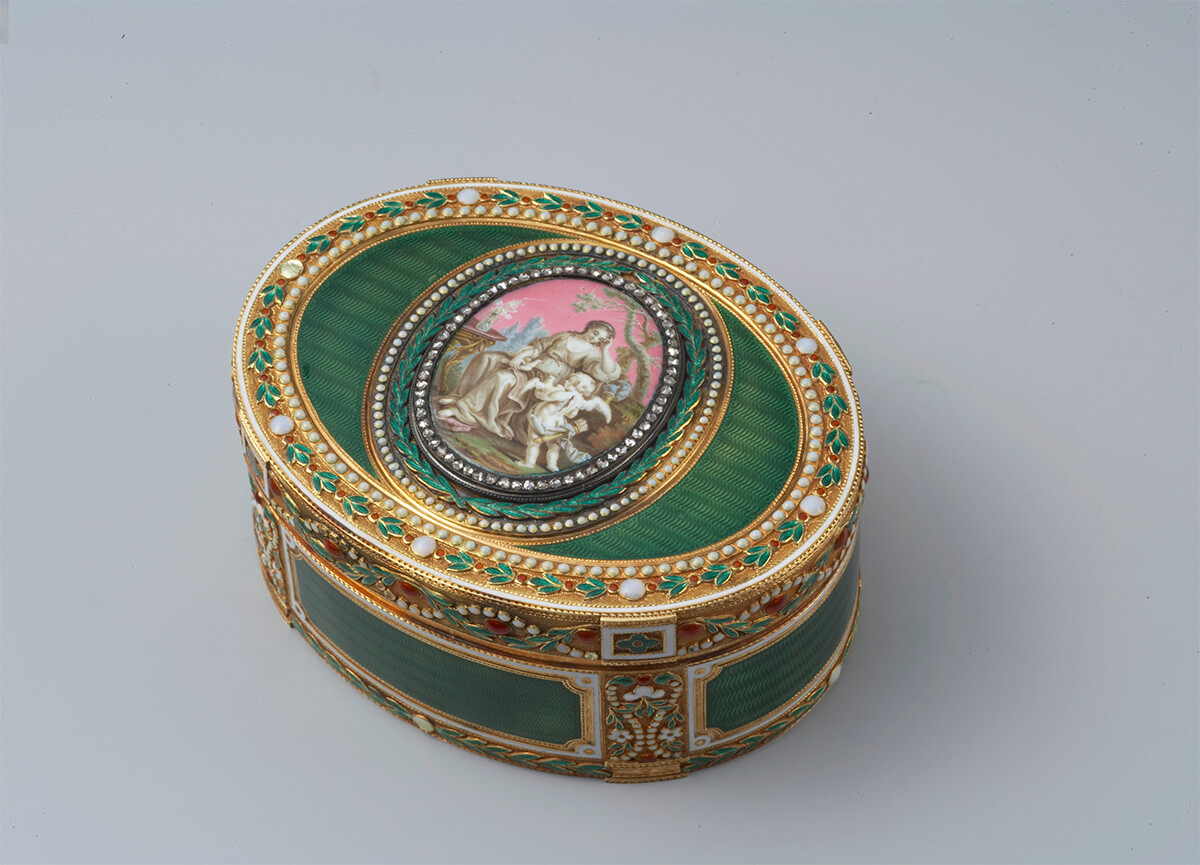
This exquisite masterpiece by Mikhail Perkhin, who worked for the firm of Fabergé, was an “answer” to Alexander III's question as to whether Russian jewelers can create luxury items just as fabulous as their French counterparts. Inspired by Joseph Etienne Blairzy’s snuff box from the collection of Catherine the Great, Perkhin created a variation of his own. He embellished the gold box with green enamel and placed an image depicting Venus and Cupid on the lid that was surrounded by a scattering of diamonds. The work of the Russian master was so spectacular that the Emperor sent the snuff box to the Hermitage Museum along with the French original.

Catherine the Great really loved tobacco. She had snuff boxes literally all over the place. During her reign, the elegantly decorated boxes became not just items of fashion but also magnificent works of art. Her collection included snuff boxes for any theme or occasion. For example, the “Cabinets of Stones” series consisted of snuff boxes sprinkled with gemstones. One of them, made by David Rudolph in the 1780s, was dedicated to the wealth of Russia’s natural resources. The craftsman from St. Petersburg lined the sides of the snuff box with agates and multi-colored jasper and placed the Siberian coat-of-arms on the inside. In the center of the lid, surrounded by topaz and amethysts, he placed an onyx cameo with a portrait of Catherine the Great.

Looking at this object it’s hard to imagine that it was meant only for tobacco storage. In fact, it looks like a puzzle ready to be solved. The golden oval box made by a Viennese craftsman is decorated with 54 stones. In the center, there is an agate reminiscent of Catherine the Great’s face profile. It is surrounded by the “precious Oriental stones”: diamonds, turquoise, tourmalines, aquamarines, garnets, emeralds, topaz, and moonstones. Together they form the eight spheres of the Universe, as Plato envisioned it. The snuff box is “girdled” with medallions depicting Roman emperors. But the surprises do not end there. The bottom of the box also has gemstones, which form a perpetual calendar. The blue enamel backing features minerals symbolizing the Moon, the Sun, and the months of the year.
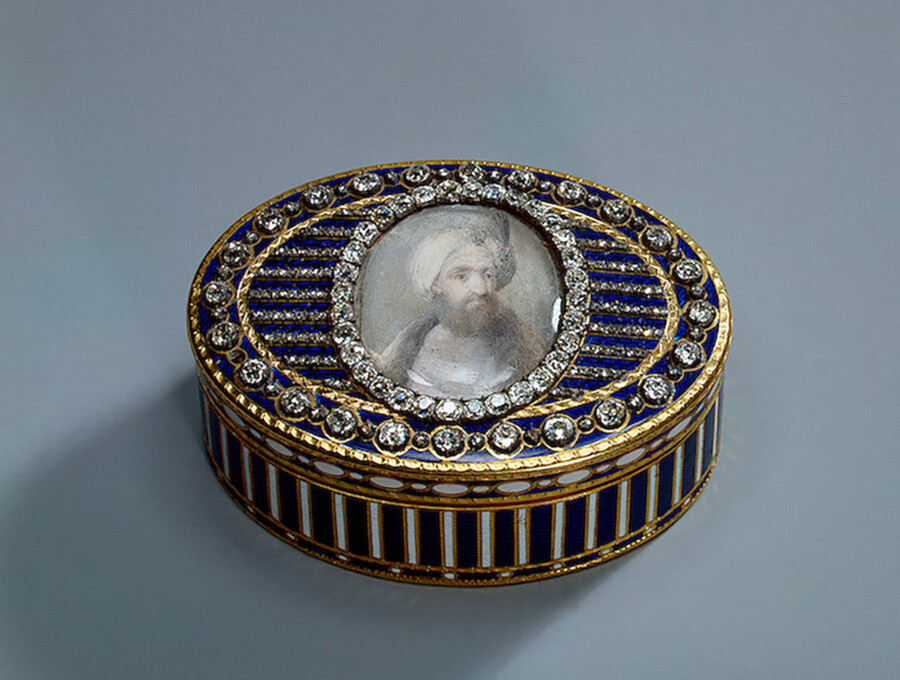
Snuff boxes were also used to chronicle important events. Conquests and discoveries of new lands, victories in wars - all this was reflected on these small objects. For example, on the occasion of the Treaty of Küçük Kaynarca between Russia and Turkey, the Empress ordered a special snuffbox from Johann Gottlieb Scharf. The blue enamel is speckled with diamonds and its center has a watercolor portrait of the Turkish Sultan Abdul Hamid in a fur cloak and turban.
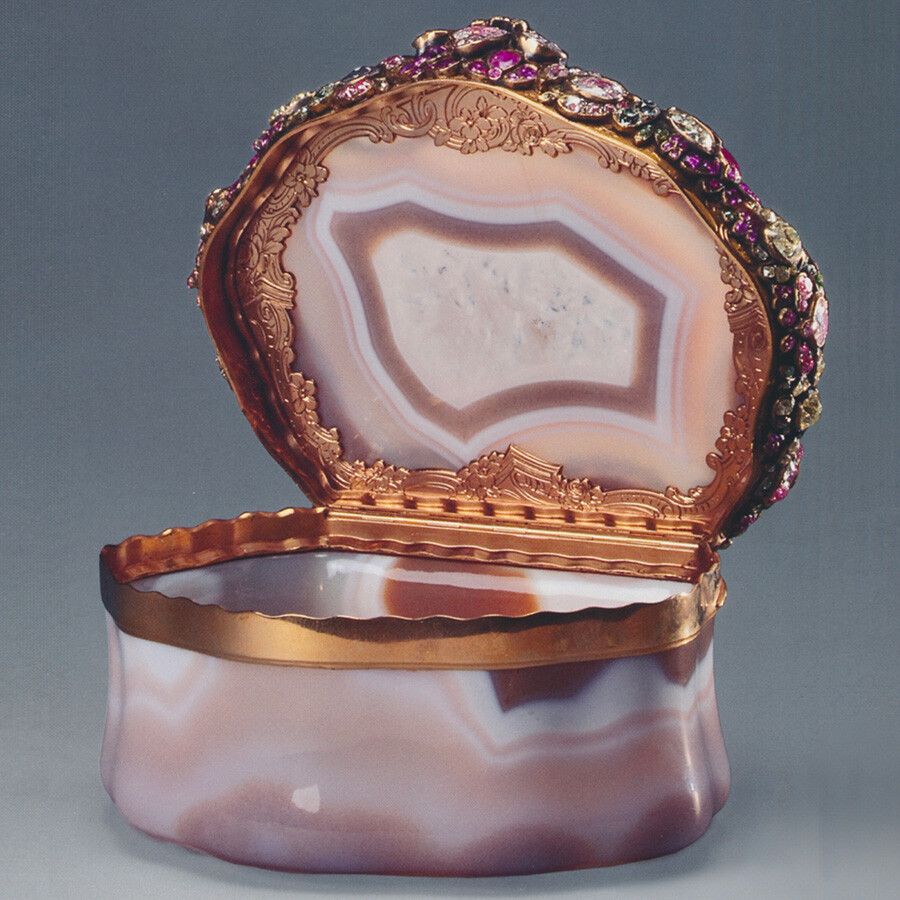
Many monarchs collected snuff boxes. Frederick the Great, King of Prussia, was a passionate collector. The monarch’s collection counted more than 1,500. Undoubtedly, these miniature works of art were the subject of Frederick’s pride. That is why he often gave them away as gifts. For example, once, he presented a snuff box to Friedrich Wilhelm III, the great-nephew of Alexander II and the father of Empress Alexandra. It was made from light gray agate and decorated with diamonds, nephrites, and rubies on a background of multi-colored foil. In turn, Friedrich Wilhelm III presented it to Nicholas I.
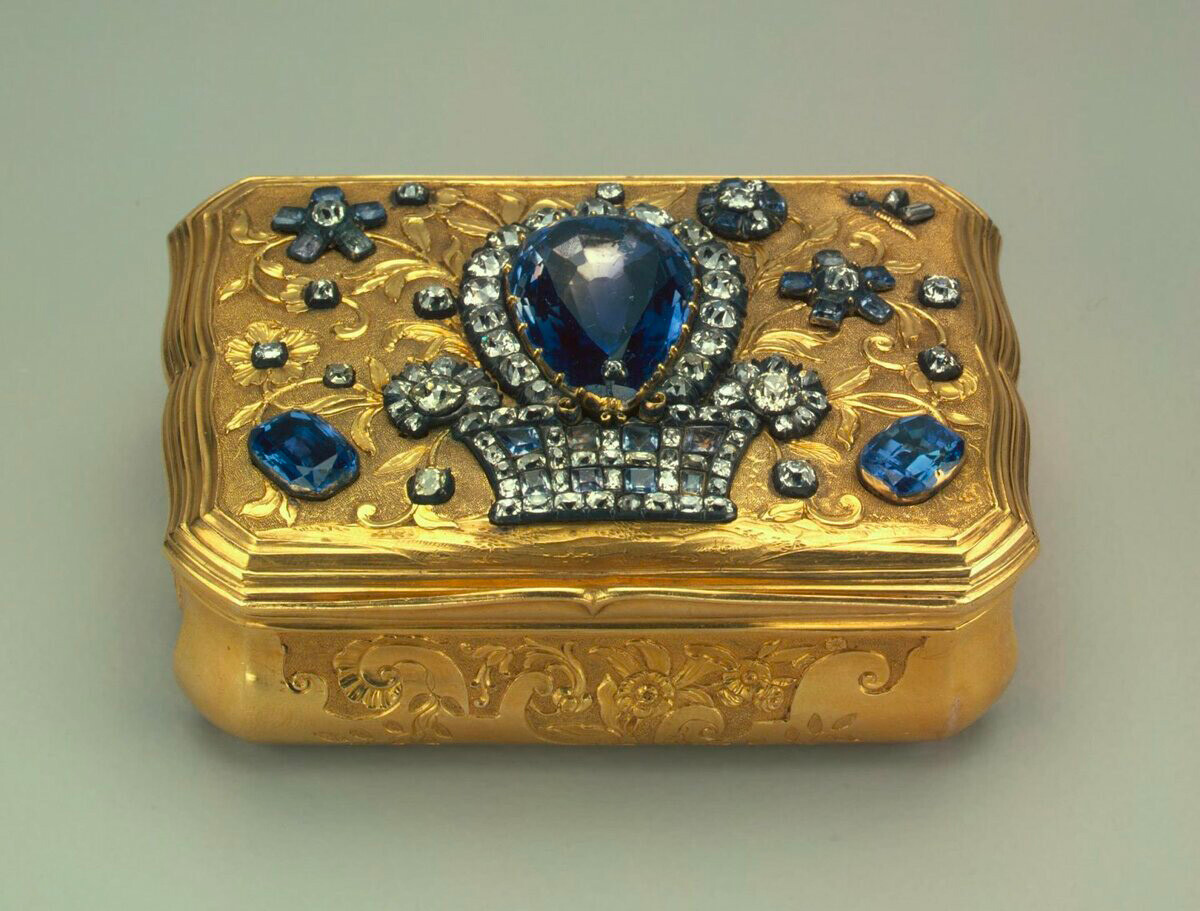
One of the craftsmen who created jewelry for the Russian monarchs was Switzerland’s Jeremia Pozier. He became the court jeweler under Empress Anna, making earrings, brooches and precious “bouquets” for Elizabeth, and created the famous large imperial crown for Catherine the Great. His orders also included snuff boxes. He made one for Catherine in gold with a lush floral decoration. The lid and walls are decorated with ornaments, and a diamond scattering forms a basket in the center of which is a large “flower” - a sapphire.
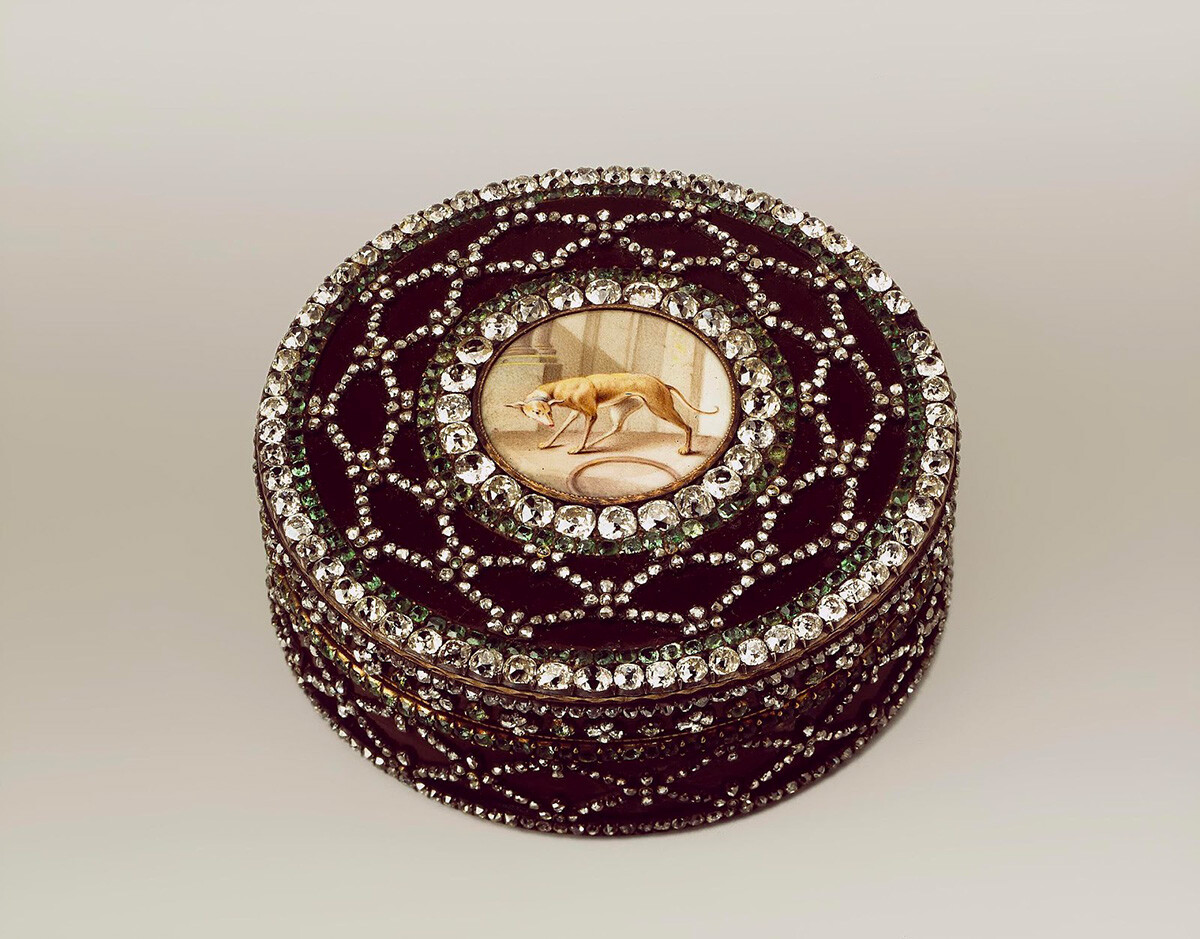
The medallion depicting the Italian Greyhound “Lisette” was placed on a snuff box by German jeweler Johann Gottlieb Scharf. The portrait is laced with diamonds and emeralds. Dogs of this breed were Catherine’s passion. From 1770, elegant Italian Greyhounds lived in the empress’s apartments. In her letters she spoke about the dogs with great pleasure, though sometimes complaining that her handwriting was blotchy because of them. At the same time, she was disappointed that her pets could not speak.
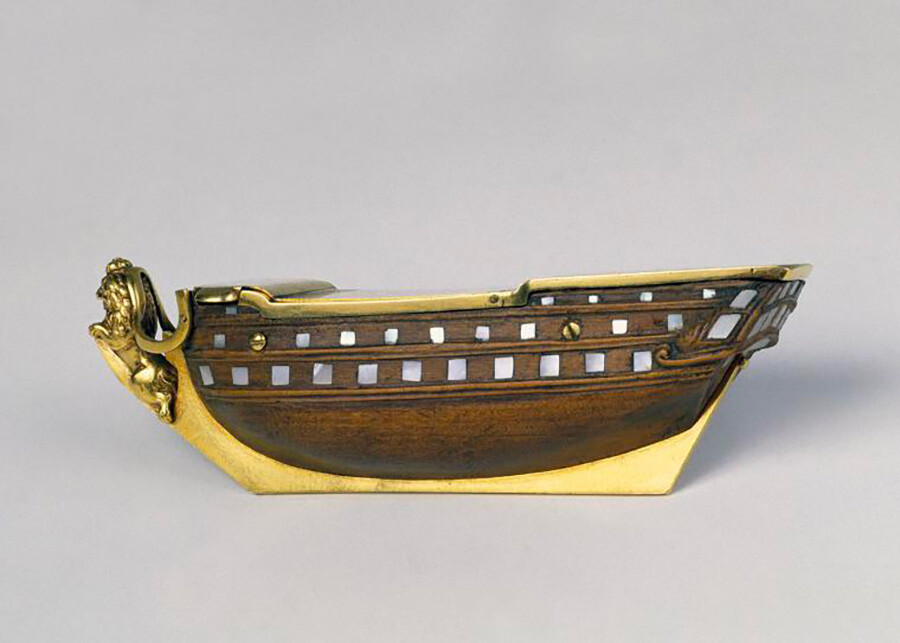
This ship-shaped snuff box accompanied Peter the Great on his trip to Flanders and Britain. The galley hull is made of wood and gold, decorated with silver and a figure of a roaring lion, while the cannon ports are covered with mother-of-pearl. The idea of J.P.M.’s jewelers was to remind Peter of the birth of the Russian fleet and his victory in the Azov campaigns.

Craftsmen did not only decorate snuff boxes, but also added special meanings to patterns and images. A snuff box could serve as a valuable gift, a reminder of an unforgivable deed, or even a romantic relationship. King of Poland, Augustus the Strong, gave Peter the Great a precious box portraying the plot of “Leda and the Swan.” This golden snuff box was made by the famous Swedish craftsman Carl Gustav Klingstedt, who richly decorated it with ornaments, diamonds, and rock crystals. The fact that Countess Kozel, a mistress of Augustus, was portrayed as Leda added a certain peculiarity to the plot.
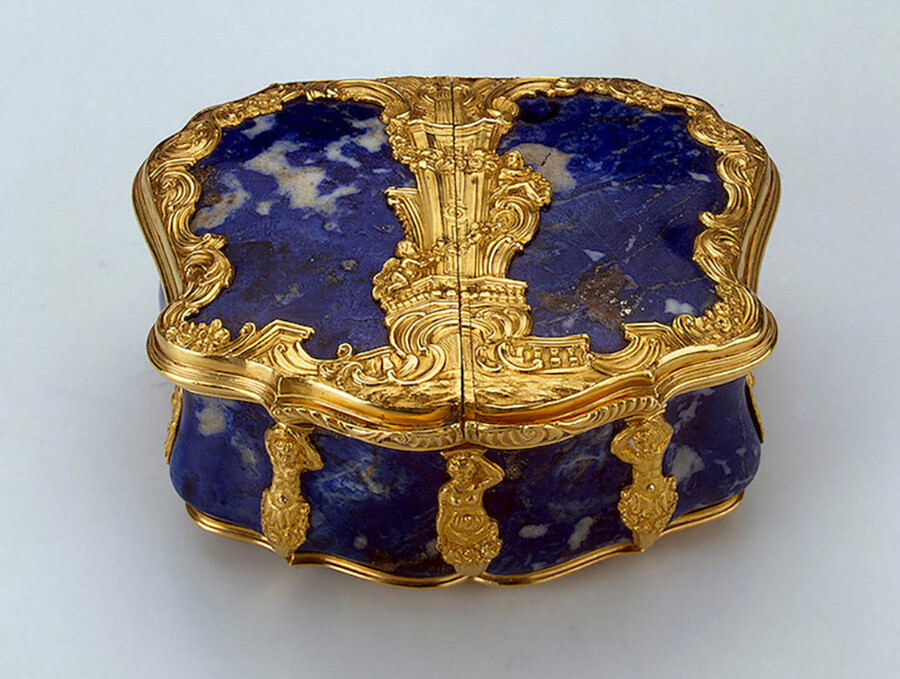
During the reign of Empress Elizabeth tobacco became so popular that she had to issue a decree forbidding it in churches. Her own collection of snuff boxes was impressive - porcelain and gold, studded with stones and decorated with monograms and portraits of the Empress. Among them, however, were also practical ones: for example, a snuff box made out of lapis lazuli that was intended for two kinds of tobacco. A golden frame separates the two sections in the center, making the snuff box look simultaneously elegant and solemn.
Dear readers,
Our website and social media accounts are under threat of being restricted or banned, due to the current circumstances. So, to keep up with our latest content, simply do the following:
If using any of Russia Beyond's content, partly or in full, always provide an active hyperlink to the original material.
Subscribe
to our newsletter!
Get the week's best stories straight to your inbox